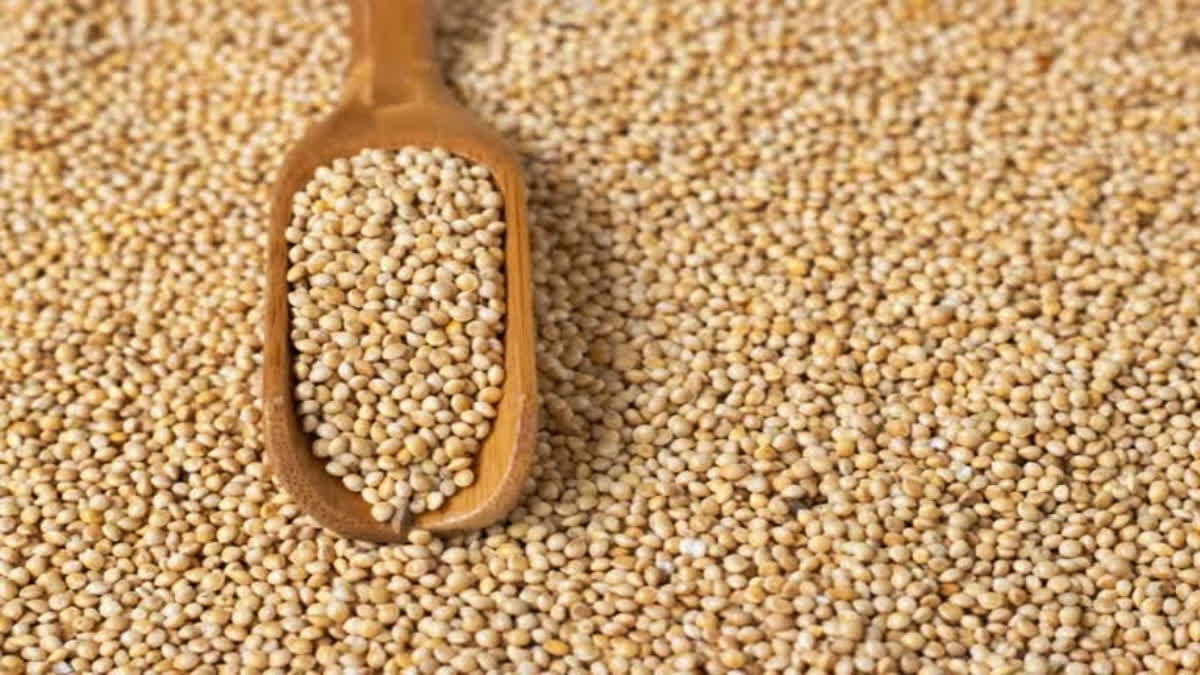New Delhi:India is looking forward to tapping a $2 billion export opportunity by promoting millets – Ragi, Jowar and Bajra – and millet-based products, dubbed as a healthy and environment-friendly alternative to water-guzzling wheat and rice. Millets have been grown and consumed in the country for ages but they have faded into oblivion with the success of wheat and rice in recent decades.
India is the world’s millet capital as it accounts for more than 40 per cent of the world's production, and nearly 80 per cent of the millet production in Asia. There are three major millet varieties such as Ragi (Finger Millet), Jowar (Sorghum) and Bajra (Pearl Millet). In addition to these three major millets, several minor millets are also there such as Kutki (Little Millet), Kangni (Foxtail Millet), Barri (Proso Millet), Jhangora (Barnyard Millet) and Koden (Kodo Millet).
These millets offer several benefits over wheat and rice in terms of their nutritional value and also health benefits as they are good for maintaining low blood sugar levels, unlike wheat and rice. In addition to their nutritional and health benefits, millets are environment-friendly crops as they require little water and can withstand extreme weather and climatic conditions that is why they are known as environment-friendly and climate-resistant crops.
TR Kesavan, President of TAFE and Chairman of FICCI’s Agriculture Committee says millets are suited to diverse conditions, millets offer essential nutrients, manage diabetes, enhance food security, conserve biodiversity and symbolise cultural heritage. “Millets present a potential crop for the future. It is high time to build the brand of India in millets, for they hold the potential to reshape our agricultural landscape,” Kesavan said.
Being the world’s largest producer of millet, India has been trying to boost its exports by taking advantage of the fact that the United Nations has declared the current year as the International Year of Millet (IoYM) which was supported by 72 countries in the world body. While India is the world’s largest producer, Africa remains the largest consumer of the millets with 40 per cent share in global consumption.
A $2 billion export opportunity
A knowledge paper jointly produced by the industry body FICCI and PwC projects that the global trade of millets will increase to nearly $14 billion in the next five years. In 2021, the world exported 509.73 tonnes of millets worth $198.66 million. The top exporters of millets were Ukraine ($45.71 million), the United States ($28.52 million), India ($27.42 million), the Russian Federation ($17.72 million) and France ($14.25 million).
In the same year, the world imported 553.71 tonnes of millets worth $256.86 million, with the top importers being Indonesia ($37.86 million), the European Union ($28.87 million), Germany ($16.55 million), Belgium ($13.80 million) and Canada ($13.51 million). The global market size of millets is projected to grow at a compound annual growth rate (CAGR) of 4.6 percent (from 2023–2028) and reach $13.80 billion by 2028.
